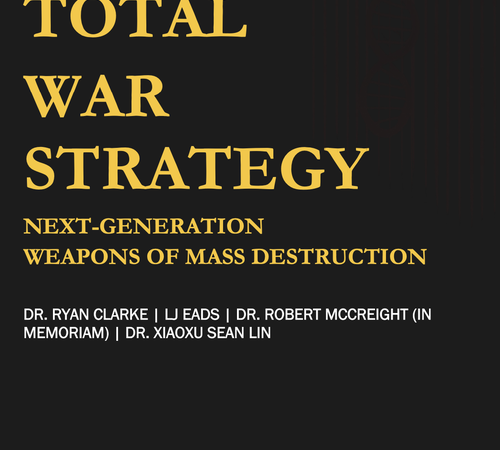The Y-Prize: Elevating collaboration and innovation in competition


How does the Y-prize work?
Many student competitions start with a wide-open problem or challenge—put a man in space, create a carbon capture device—and ask participants to come up with a technological solution. This is what is known as an X-Prize competition. The Y-Prize turns things around: We start with the technology and challenge students to come up with applications for it.
The Mack Institute works closely with the Penn Center for Innovation to identify two technologies that are early enough to not have obvious commercial applications or be incumbered by numerous patents but, at the same time, mature enough to have some commercial promise and IP protection to minimize risks for Penn. Striking the right tradeoff is tricky, and the outcome is often surprising. One faculty member told me that he has shared with students a technology for which he did not see any prospects for 10 years, at least. To his amazement, the students came back with a totally feasible proposal, won the Y-Prize, and eventually launched a startup.
Last year, many of our submissions focused on medical applications and our winners, Ossum Technologies, proposed a more efficient way to set fractured bones. This year, we have two technologies from Penn Engineering: solar-powered aerial vehicles (from the lab of Igor Bargatin) and physics-informed neural networks (from the lab of Paris Perdikaris). We asked students to take a step back and imagine how these technologies could be used to make our lives better. Seventeen teams submitted proposals. After Professors Bargatin and Perdikaris screen the proposals for feasibility, an interdisciplinary jury determines the finalists. The winner will be announced at the competition’s finale on Feb. 6.
When the Y-Prize first started, it initially focused on the field of robotics. Subsequent competitions shifted the focus and offered technologies in other fields. Can you talk more about the history of the Y-Prize?
From the Mack Institute’s perspective, the Y-Prize is a kind of innovation tournament, something the Wharton School is well known for. We’re also interested in developing emerging technologies for use in large corporations. These became compelling reasons for putting Mack’s organizational and financial resources behind the initiative.
Strictly speaking, we’ve never focused on specific fields for two reasons. First, the technology maturity tradeoff described above already constrains our choices. Most importantly, we want to expose students to the full spectrum of technological advances at Penn. While health care applications have been dominant throughout the years, we also saw extraordinary projects in geophysics and educational tech.
This will be the competition’s 11th year. Our biggest success story is Avisi Technologies, who won in 2017 with a nanoscale implant used to treat glaucoma. They’re now a successful startup in their own right: a resident of the Pennovation Center with millions in funding.
Looking back at the past decade of competition, the Y-Prize showcases many of Penn’s strengths: cutting-edge engineering research (particularly in robotics and life sciences), plus students’ willingness to embrace emerging technologies and the entrepreneurial spirit that pervades campus.
How has the pandemic affected the Y-Prize?
A big part of the Y-Prize Competition and what makes a successful team is networking and collaboration. This happens best when we are in person and thus the pandemic was a challenge. We held our events virtually and used online tools to help students find teammates and engage in productive collaboration.
This semester, we made up for lost time by hosting Y-Prize brainstorming sessions at the Mack suite in Steinberg-Dietrich Hall. Students came by and chatted with each other, and with the Management professor Jax Kirtley—while enjoying free Wawa hoagies, of course.
Talk about the collaboration between all the different departments within Penn that help bring the Y-Prize to fruition.
From a top-down perspective, the Y-Prize is a collaborative effort of four parties: The School of Engineering, the Mack Institute, Penn Center for Innovation (PCI) and Venture Lab. Their involvement varies across the stages of the competition. At the preparatory stage, our Program Manager Terri Butrymowicz works closely with Engineering faculty and PCI on identifying two technologies. Then we engage Cherie Kagan, dean for research of the School of Engineering, for the launch event, which usually takes place in September or early October. Tangen Hall, where Venture Lab is located, offers resources for putting together presentations and mockups.
However, the most valuable collaboration takes place bottom-up, among students themselves who must put together a diverse but capable team. This requires identifying the right mix of skills and experiences, finding a common language among people of various backgrounds trained in very different fields, and nurturing trust among them. Many students face such a challenge for the first time in their academic career. It’s not uncommon to see a team that has Wharton students, engineers, people from the Weitzman School of Design, and even a liberal arts major. Of course, having a common goal helps a lot, but however strong the incentives are, there are equally strong disincentives, in particular, a high risk of failure and many competing priorities which are inherent to student life. Students must learn to keep a team on track when multiple strong forces pull it apart.
As the new executive director of the Mack Institute, how do you see the future of the Y-Prize?
The Y-Prize’s future is bright. The technology keeps surprising us and capturing students’ imaginations. This year alone, we’re working with two interesting topics: neural networks and solar nanotechnology. This said, our team is aware that a decade of successful runs brings the danger of routinization and complacency. To maintain the faculty and students’ high level of engagement, we need to continuously experiment with the competition’s content and format. We’d like to collaborate more closely with Venture Lab and Pennovation on providing post-competition support for the Prize winners. And because the competition is a great way to introduce students to Penn’s innovation ecosystem, we’re currently exploring synergies between the Y-Prize and other Mack’s initiatives within that ecosystem.



